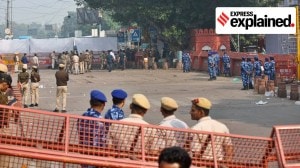Onion prices hit the roof once again
NASHIK, Aug 12: With the stock of Rabi onions harvested in May fast depleting and the fresh Kharif crop yet to arrive, wholesale prices o...

NASHIK, Aug 12: With the stock of Rabi onions harvested in May fast depleting and the fresh Kharif crop yet to arrive, wholesale prices of onions at the Lasalgaon Agriculture Produce Marketing Committee’s (APMC) marketyard have leapfrogged from an average Rs 900 per quintal to around Rs 1,600 per quintal over the last week. What’s worse, prices are likely to continue to climb till mid-September, when the Kharif crop is harvested.
The APMC receives about 1,000 tractors (carrying 30 quintals each) during the peak supply season and about 1,400 tractors during a glut. However, arrivals have plummeted to 300 tractors. At present, wholesale prices range from Rs 600 per quintal to Rs 1,751 per quintal, depending on the quality of the onions.
A spokesperson of the APMC says the onions being currently sold were harvested during the Rabi season, last summer. The Rabi crop has a better shelf life of about six months compared to the Kharif crop, which starts rotting within a month due to its high moisturecontent.
If the Kharif crop fails, there will be an acute shortage till the arrival of the next Kharif crop in February 1999.
Prices peaked this year at Rs 1,851 per quintal on February 3. As an emergency measure, the Central government had banned exports to control domestic prices. When the ban was lifted on March 3, prices plunged to around Rs 700 per quintal. The subsequent arrival of the Rabi crop then stabilised prices, at around Rs 700-800 per quintal.
With the farmers’ break-even price pegged at Rs 300 per quintal, any further slide inevitably sparking an agitation. Last year, prices slid to Rs 200 per quintal due to a glut, provoking farmers to pelt two ministers (Babanrao Gholap and Tukaram Dinghole) with onions, demanding a support price of Rs 300 per quintal.
Opposition members in the State Legislature took the cue and on July 9, 1997, they lobbed onions at the treasury benches during the Monsoon Session of the Assembly when the issue price was raised.
Farmers bear brokerage and handlingcharges amounting to 8.5 per cent of the auction price. The trader, who purchases the onions, bears market fees and other charges, which amount to 13 per cent of the value transacted. Transport costs hike overheads by Rs 30 per quintal and by the time a consignment worth Rs 1,000 arrives at the wholesale market at Vashi in Navi Mumbai, the price goes up to Rs 1,200. During the onward journey to Dadar, Byculla and Mumbai’s suburbs, a fresh chain of traders takes over, pushing the prices up at every stage.
The current situation has also been precipitated by the failure of the Kharif crop last year due to adverse climatic conditions. Now, hope is riveted on the arrival of the Pol’ variety onions which will be harvested in September-October.






- 01
- 02
- 03
- 04
- 05

























